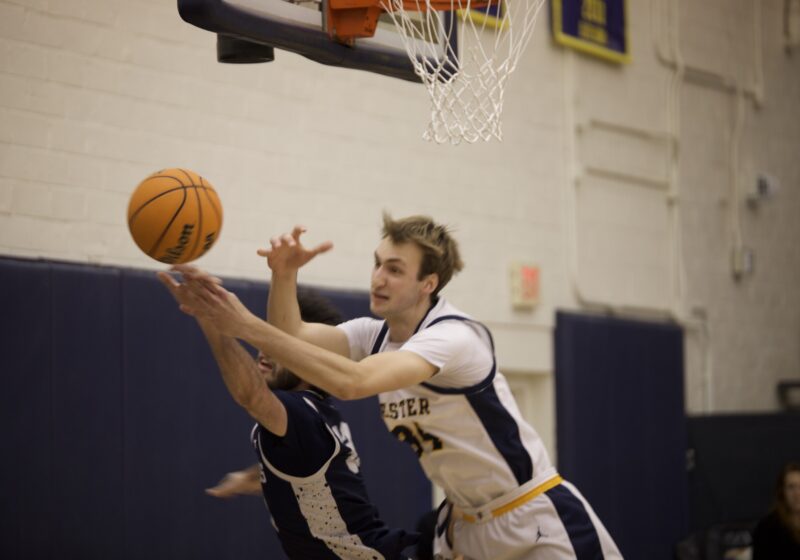Notre Dame has a five-year, $45 million contract with NBC to broadcast its home football games, more national championships and Heisman Trophy winners than any other college football program and is the most popular program in all of college sports. Although Notre Dame, with 11 national titles and seven Heisman Trophy winners, has attained rarefied air in football, the school has done so without sacrificing its notoriously tough admissions standards or any of its well-earned academic cachet. It is no surprise, then, that when former Notre Dame great and 1956 Heisman Trophy winner Paul Hornung suggested that the school should lower their standards in order to recruit top black athletes, the entire sports world flinched at the thought. “We’re playing eight bowl teams next year and it’s always year in and year out one of the toughest schedules,” Hornung said. “You can’t play a schedule like that unless you have the black athlete today and it’s [still] very, very tough to get into Notre Dame. [The school] just doesn’t understand it, yet they want to win.”Hornung’s suggestion prompted a media firestorm. The media coverage was so intense that Hornung later backed down from his statement. He apologized for limiting his comment to black athletes, but reiterated his stance that Notre Dame should still lower its academic standards to those of the teams they are competing against. He cited the Fighting Irish’s futility in recent years, having not won a championship in 15 years – the second longest futility streak in program history – and Notre Dame having losing records three times in the past five years. To drive the point home, Hornung said that former Notre Dame coach Lou Holtz once showed him a list of the top 50 football recruits in the nation. After Holtz visited with the office of admissions, he notified Hornung that he could only recruit three of the players on that list. Furthermore, Hornung contends that Notre Dame relaxed its stringent requirements to recruit the top athletes in the mid-1980s. That group produced the last national championship for the Fighting Irish in 1989, defeating West Virginia 31-24 in the Fiesta BowlHowever, Notre Dame spokesman Matthew Storin disagrees with Hornung’s comments. “Our records show that admission requirements for athletes have remained constant over those years in which we have had both great success and occasional disappointments with our football teams,” Storin said. Whether or not Notre Dame returns to being the pinnacle of college football will likely be determined by its ability or inability to recruit the best athletes from around the nation. This is no small feat anymore for the school. After all, Notre Dame just isn’t, well, Notre Dame anymore. The program has lost much of its mystique. While top students are attracted to the educational possibilities at Notre Dame, the top football players are attracted to the prospect of winning championships at places like Florida State University and Ohio State University, where admissions requirements are more lenient and championship trophies are still expected. If Notre Dame continues to balk at suggestions to lower its standards, it does have other hope to compete in major sports without making exceptions to its admissions policy. Selective schools like Duke, North Carolina, Stanford, UCLA, Michigan and Texas continually enjoy success in athletics. Stanford, for example, has captured the Sears Cup – which crowns the best athletic department each year – for nine consecutive years. Texas and UCLA have finished second each of the past four years. This year, Michigan leads Stanford by a narrow margin. These schools are both pinnacles of academic excellence and powerhouses in football and basketball. However, Michigan is the only school that finished both in the Top 25 on the gridiron and in the Top 50 in the newest release of the US News & World Report rankings of national research universities. Schools like Michigan and Texas do relax their admissions standards for athletes. Stanford, despite its top-notch athletics department, does not boast a football powerhouse among its many elite athletics programs, a direct result of the school’s high academic standards that it rightfully holds its student-athletes to. It is the reality of big-time college sports today. Notre Dame can no longer rely on its name to attract the major athletes. Football powers relax standards while academic powers remian true to them. Alas, there was some kernel of truth in Hornung’s comments. This is the unfortunate Hobbson’s choice facing Notre Dame. Tipton can be reached at rtipton@campustimes.org.
2022
Priya Ragu’s 2021 “damnshestamil” pays homage to her Tamil heritage
Released in 2021, her debut album “damnshestamil” is a warm combination of contemporary music and an ode to her heritage, incorporating audio clips of women speaking in Tamil overlayed with traditional South Indian beats.
economics
Banning sweatshops won’t fix poverty, says visiting professor
“Welfare of the workers is the goal,” Powell said. “... We [must] have a means-end discussion about what policies deliver on that."
Basketball
UR men’s basketball get their hearts broken on Valentine’s Day
Desperate for points, UR successfully drew a foul on Adusei, putting Kwiecinski at the stripe. He also made both. Without options, UR fouled Adusei again, who made both free throws.



